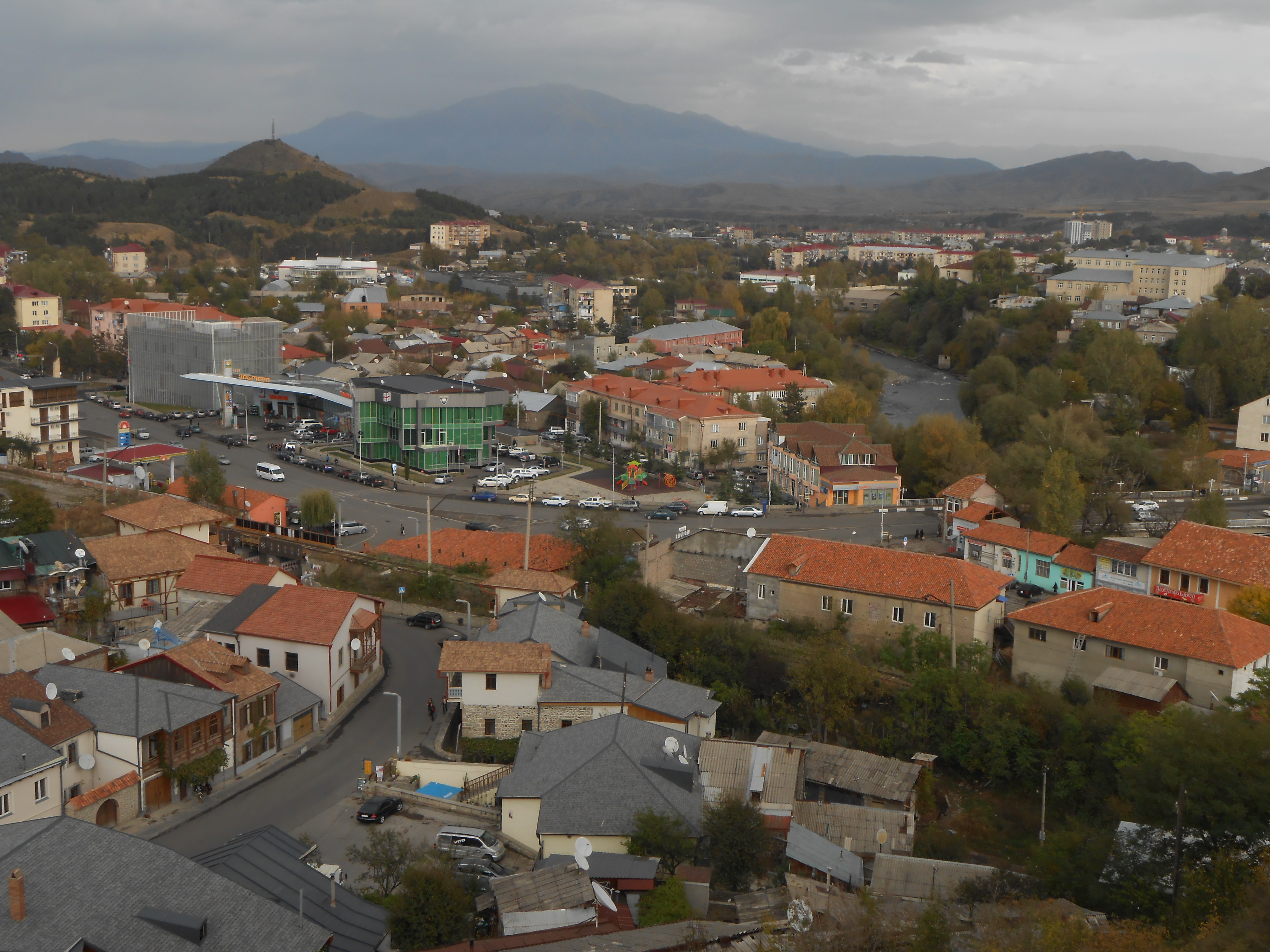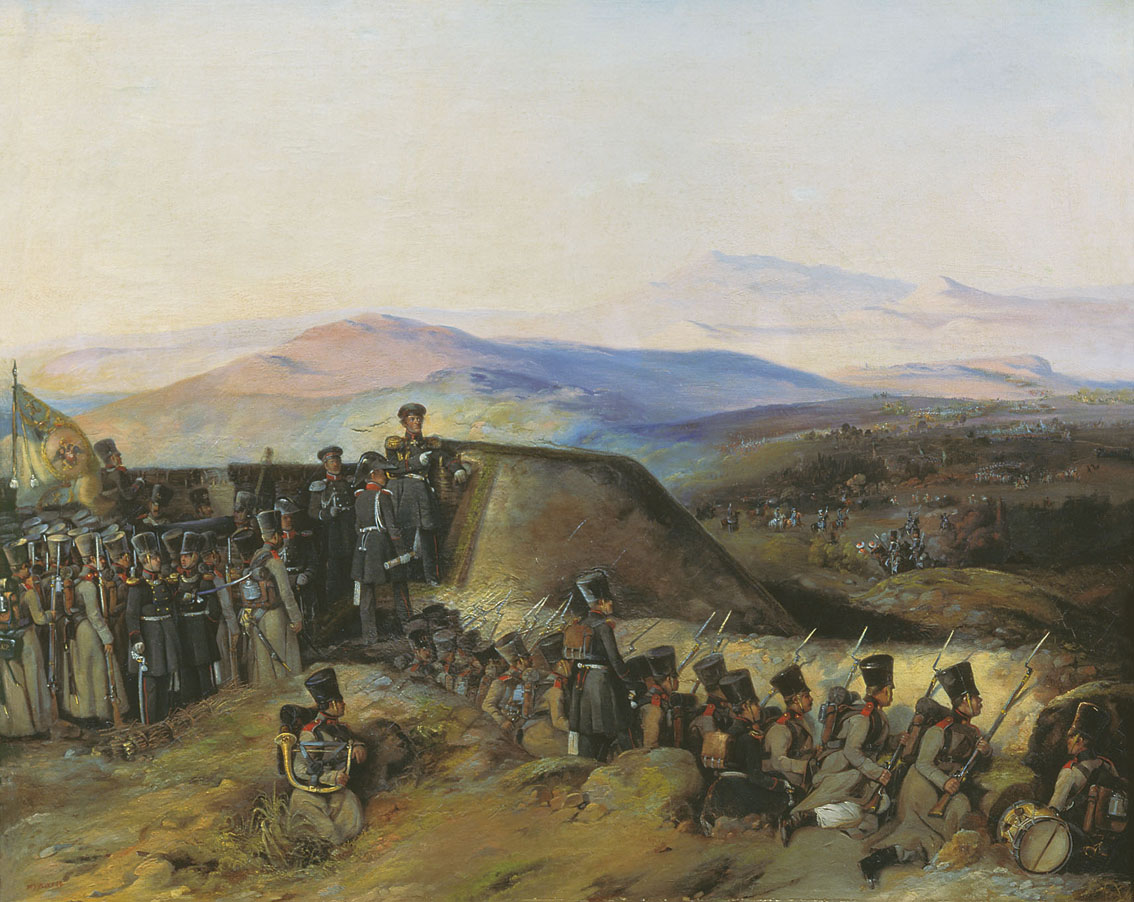|
Akhaltsikhe Uezd
The Akhaltsikhe ''uezd'' was a county (''uezd'') of the Tiflis Governorate of the Caucasus Viceroyalty of the Russian Empire, and then of Democratic Republic of Georgia, with its administrative center in Akhaltsikh (present-day Akhaltsikhe). The ''uezd'' bordered the Gori ''uezd'' and the Kutaisi Governorate to the north, the Akhalkalaki uezd to the east, the Ardahan Okrug of the Kars Oblast to the south, and the Batum Okrug of the Batum Oblast to the west. The area of the ''uezd'' corresponded to part of the contemporary Samtskhe-Javakheti region of Georgia. History The territory of the Akhaltsikhe uezd, entered into the Kutais Governorate of the Russian Empire following the Russo-Turkish War of 1828. By 1840, the Аkhaltsikhe ''uezd'' was formed as a civilian district of the Tiflis Governorate. In 1874, the Akhalkalaki ''uezd'' was detached from it as a separate county. Following the Russian Revolution, the Akhaltsikhe ''uezd'' was incorporated into the short-lived De ... [...More Info...] [...Related Items...] OR: [Wikipedia] [Google] [Baidu] |
Akhaltsikhe
Akhaltsikhe ( ka, ახალციხე ), formerly known as Lomsia ( ka, ლომსია ), is a small city in Georgia's southwestern region () of Samtskhe–Javakheti. It is the administrative center of the Akhaltsikhe Municipality and the Samtskhe–Javakheti region. It is situated on both banks of the small river Potskhovi (a left tributary of the Kura), which divides the city between the old city in the north and new in the south. The 9th-century Akhaltsikhe (Rabati) Castle, which was recently restored, is located in the old part of the city. It is one of the main attractions of the Samtskhe–Javakheti region, along with Vardzia, Vale, Okrostsikhe and Zarzma. Toponymy Akhaltsikhe is the Georgian name of the town, which literally means "new fortress". It is attested in Arabic sources as (and ), in Persian as (also spelled as ), and in Turkish sources as . The Azerbaijani village of Axısxa is also named after it, due to the population of the village origin ... [...More Info...] [...Related Items...] OR: [Wikipedia] [Google] [Baidu] |
Batum Okrug
The Batumi okrug was a district (''okrug'') of the Batum Oblast of the Russian Empire existing between 1878 and 1918. The district was eponymously named for its administrative center, the town of Batum (present-day Batumi), now part of Adjara within Georgia. The ''okrug'' bordered with the Artvin okrug in the south, the Ardahan okrug of the Kars Oblast to the southeast, the Tiflis Governorate to the northeast, the Kutaisi Governorate (of which it was a part in 1883–1903) to the north, and the Trebizond Vilayet of the Ottoman Empire to the west. Administrative divisions The prefectures () of the Batumi ''okrug'' were: Demographics Russian Empire Census According to the Russian Empire Census, the Batumi ''okrug'' had a population of 88,444 on , including 53,149 men and 35,295 women. The majority of the population indicated Georgian to be their mother tongue, with significant Russian, Armenian and Greek speaking minorities. ''Kavkazskiy kalendar'' According to th ... [...More Info...] [...Related Items...] OR: [Wikipedia] [Google] [Baidu] |
Russian Language
Russian is an East Slavic languages, East Slavic language belonging to the Balto-Slavic languages, Balto-Slavic branch of the Indo-European languages, Indo-European language family. It is one of the four extant East Slavic languages, and is the native language of the Russians. It was the ''de facto'' and ''de jure'' De facto#National languages, official language of the former Soviet Union.1977 Soviet Constitution, Constitution and Fundamental Law of the Union of Soviet Socialist Republics, 1977: Section II, Chapter 6, Article 36 Russian has remained an official language of the Russia, Russian Federation, Belarus, Kazakhstan, Kyrgyzstan, and Tajikistan, and is still commonly used as a lingua franca in Ukraine, Moldova, the Caucasus, Central Asia, and to a lesser extent in the Baltic states and Russian language in Israel, Israel. Russian has over 253 million total speakers worldwide. It is the List of languages by number of speakers in Europe, most spoken native language in Eur ... [...More Info...] [...Related Items...] OR: [Wikipedia] [Google] [Baidu] |
Georgian Language
Georgian (, ) is the most widely spoken Kartvelian language, Kartvelian language family. It is the official language of Georgia (country), Georgia and the native or primary language of 88% of its population. It also serves as the literary language or lingua franca for speakers of related languages. Its speakers today amount to approximately 3.8 million. Georgian is written with its own unique Georgian scripts, alphabet, alphabetical systems of unclear origin. Georgian is most closely related to the Zan languages (Megrelian and Laz language, Laz) and more distantly to Svan language, Svan. Georgian has various dialects, with standard Georgian based on the Kartlian dialect, and all dialects are mutually intelligible. The history of Georgian spans from Early Old Georgian in the 5th century, to Modern Georgian today. Its development as a written language began with the Christianization of Georgia in the 4th century. Georgian phonology features a rich consonant system, including aspi ... [...More Info...] [...Related Items...] OR: [Wikipedia] [Google] [Baidu] |
Armenian Language
Armenian (endonym: , , ) is an Indo-European languages, Indo-European language and the sole member of the independent branch of the Armenian language family. It is the native language of the Armenians, Armenian people and the official language of Armenia. Historically spoken in the Armenian highlands, today Armenian is also widely spoken throughout the Armenian diaspora. Armenian is written in its own writing system, the Armenian alphabet, introduced in 405 AD by Saint Mesrop Mashtots. The estimated number of Armenian speakers worldwide is between five and seven million. History Classification and origins Armenian is an independent branch of the Indo-European languages. It is of interest to linguists for its distinctive phonological changes within that family. Armenian exhibits Centum and satem languages, more satemization than centumization, although it is not classified as belonging to either of these subgroups. Some linguists tentatively conclude that Armenian, Greek ... [...More Info...] [...Related Items...] OR: [Wikipedia] [Google] [Baidu] |
Turkish Language
Turkish ( , , also known as 'Turkish of Turkey') is the most widely spoken of the Turkic languages, a member of Oghuz languages, Oghuz branch with around 90 million speakers. It is the national language of Turkey and one of two official languages of Cyprus. Significant smaller groups of Turkish speakers also exist in Germany, Austria, Bulgaria, North Macedonia, Greece, other parts of Europe, the South Caucasus, and some parts of Central Asia, Iraqi Turkmen, Iraq, and Syrian Turkmen, Syria. Turkish is the List of languages by total number of speakers, 18th-most spoken language in the world. To the west, the influence of Ottoman Turkish language, Ottoman Turkish—the variety of the Turkish language that was used as the administrative and literary language of the Ottoman Empire—spread as the Ottoman Empire expanded. In 1928, as one of Atatürk's reforms in the early years of the Republic of Turkey, the Persian alphabet, Perso-Arabic script-based Ottoman Turkish alphabet was repl ... [...More Info...] [...Related Items...] OR: [Wikipedia] [Google] [Baidu] |
Uchastok
An ''uchastok'' () or police prefecture () was a territorial-administrative unit of the Russian Empire and early Russian SFSR. Throughout most of modern Russian history, ''uchastoks'', which numbered 2,523 throughout the empire by 1914, were a third-level administrative division, below ''okrugs,'' ''uezd'' and '' otdels'' (counties). In a literal sense, ''uchastok'' approximately corresponds to the English term plot, however, in practical usage it corresponded to a municipal district. History In 1708, an administrative reform carried out by Tsar Peter the Great divided Russia into '' guberniyas'' (provinces) with subordinate uezds, whereas ''oblasts'' (regions) consisted of ''okrugs'' (counties), or ''otdels'' (Cossack counties), however, the counties of all were usually divided into either ''uchastoks'' or ''volosts'', with the exception of the ''uezds'' of the Black Sea Governorate which did not have any sub-counties. By the Soviet administrative reform of 1923–1929, most o ... [...More Info...] [...Related Items...] OR: [Wikipedia] [Google] [Baidu] |
Paris Peace Conference (1919–1920)
The Paris Peace Conference was a set of formal and informal diplomatic meetings in 1919 and 1920 after the end of World War I, in which the victorious Allies set the peace terms for the defeated Central Powers. Dominated by the leaders of Britain, France, the United States and Italy, the conference resulted in five treaties that rearranged the maps of Europe and parts of Asia, Africa and the Pacific Islands, and also imposed financial penalties. Germany, Austria-Hungary, Turkey and the other losing nations were not given a voice in the deliberations; this later gave rise to political resentments that lasted decades. The arrangements made by this conference are considered one of the greatest watersheds of 20th century geopolitical history which would lead to World War II. The conference involved diplomats from 32 countries and nationalities. Its major decisions were the creation of the League of Nations and the five peace treaties with the defeated states. Main arrangements ... [...More Info...] [...Related Items...] OR: [Wikipedia] [Google] [Baidu] |
George Curzon, 1st Marquess Curzon Of Kedleston
George Nathaniel Curzon, 1st Marquess Curzon of Kedleston (11 January 1859 – 20 March 1925), known as Lord Curzon (), was a British statesman, Conservative Party (UK), Conservative politician, explorer and writer who served as Viceroy of India from 1899 to 1905 and Foreign Secretary (United Kingdom), Foreign Secretary from 1919 to 1924. Curzon was born in Derbyshire into an aristocratic family and educated at Eton College and Balliol College, Oxford, before entering Parliament of the United Kingdom, Parliament in 1886. In the following years, he travelled extensively in Russia, Central Asia and the Far East, and published several books on the region in which he detailed his geopolitical outlook and underlined the perceived Russian Empire, Russian threat to British control of India. In 1891, Curzon was named Under-Secretary of State for India, and in 1899 he was appointed Viceroy of India. During his tenure, he pursued a number of reforms of the British Raj, British administrati ... [...More Info...] [...Related Items...] OR: [Wikipedia] [Google] [Baidu] |
Russian Revolution
The Russian Revolution was a period of Political revolution (Trotskyism), political and social revolution, social change in Russian Empire, Russia, starting in 1917. This period saw Russia Dissolution of the Russian Empire, abolish its monarchy and adopt a socialist form of government following two successive revolutions and Russian Civil War, a civil war. It can be seen as the precursor for Revolutions of 1917–1923, other revolutions that occurred in the aftermath of World War I, such as the German Revolution of 1918–1919. The Russian Revolution was a key events of the 20th century, key event of the 20th century. The Russian Revolution was inaugurated with the February Revolution in 1917, in the midst of World War I. With the German Empire inflicting defeats on the front, and increasing logistical problems causing shortages of bread and grain, the Russian Army was losing morale, with large scale mutiny looming. Officials were convinced that if Tsar Nicholas II abdicated ... [...More Info...] [...Related Items...] OR: [Wikipedia] [Google] [Baidu] |
Russo-Turkish War (1828–1829)
The Russo-Turkish War of 1828–1829 resulted from the Greek War of Independence of 1821–1829; war broke out after the Ottoman Sultan Mahmud II closed the Dardanelles to Russian Empire , Russian ships and in November 1827 revoked the 1826 Akkerman Convention in retaliation for the participation of the Imperial Russian Navy in the Battle of Navarino of October 1827. After suffering several defeats, both in the Balkans and in the Caucasus, the Sultan decided to suing for peace, sue for peace, which resulted in the signing of the Treaty of Adrianople (1829), Treaty of Adrianople on 14 September 1829. The Balkan front At the start of hostilities the Russian army of 100,000 men was commanded by Emperor Nicholas I of Russia, Nicholas I, while the Ottoman forces were commanded by Agha Hüseyin Pasha appointed by Sultan Mahmut II. In April and May 1828 the Russian commander-in-chief, Prince Peter Wittgenstein, moved into the Danubian Principalities. In June 1828, the main R ... [...More Info...] [...Related Items...] OR: [Wikipedia] [Google] [Baidu] |






